WD Red Pro Review: 4 TB Drives for NAS Systems Benchmarked
by Ganesh T S on August 8, 2014 9:00 AM ESTPerformance - Raw Drives
Prior to evaluating the performance of the drives in a NAS environment, we wanted to check up on the best-case performance of the drives by connecting them directly to a SATA 6 Gbps port. Using HD Tune Pro 5.50, we ran a number of tests on the raw drives. The following screenshots present the results for the various drives in an easy-to-compare manner. Note that some of the screenshots are from the previous roundup where we used HD Tune Pro 5.0.
Sequential Reads:
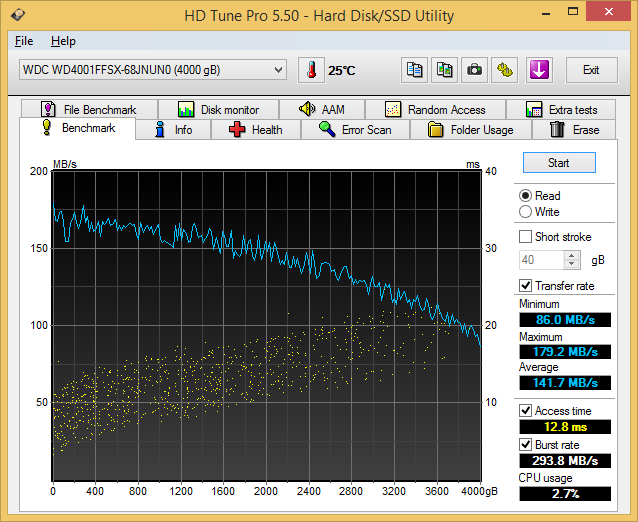
Sequential Writes:
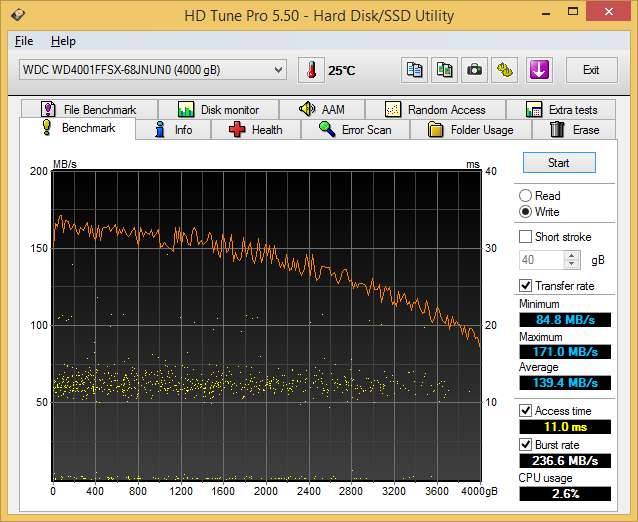
Random Reads:
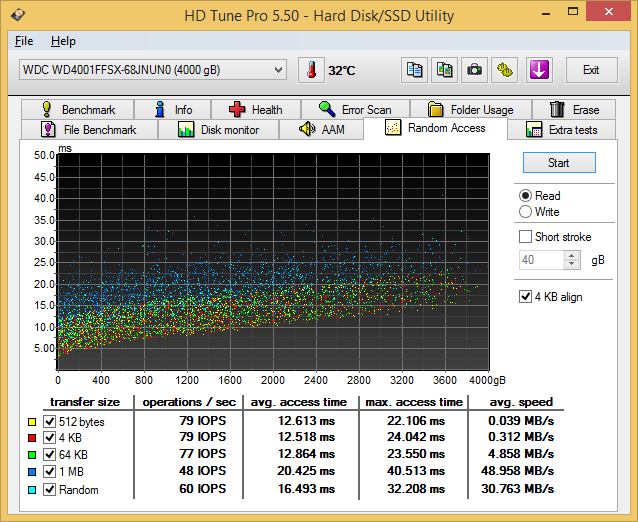
Random Writes:
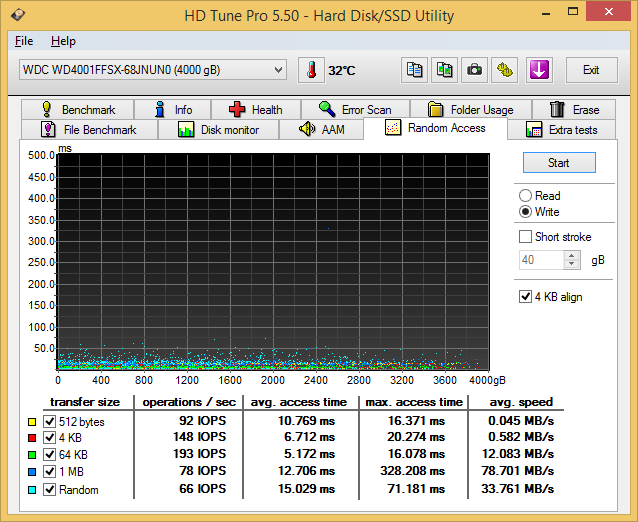
Miscellaneous Reads:
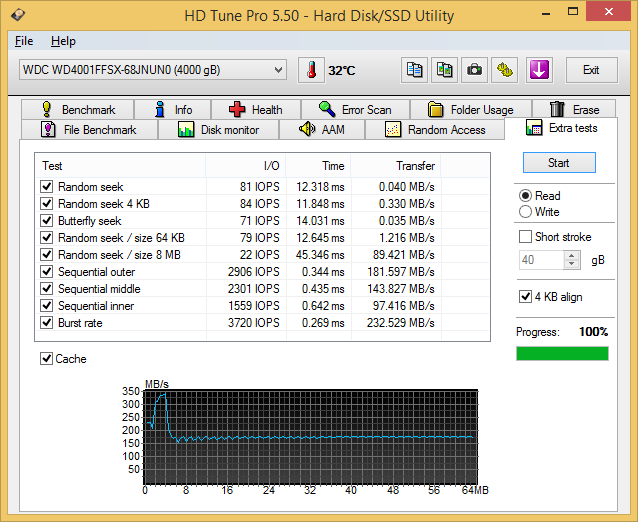
Miscellaneous Writes:
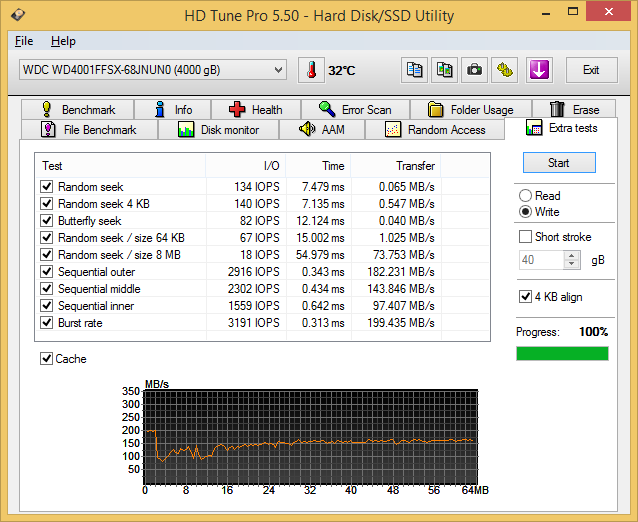










62 Comments
View All Comments
NonSequitor - Friday, August 8, 2014 - link
Most of the storage stuff I work with is bigger than the one Linux box, so I haven't dug deeply in to the exact details of that implementation. I do know I was bit in the past by a RAID5 with a bad disk in it turning the entire thing to trash. Thankfully some experimentation was able to determine which disk was actually returning garbage.However I have not seen the stripe reconstruction count going up during monthly scrubs, so what I'm saying is that my experience is that actual URE counts are lower than the spec. The spec may be a worst case or something else like that.
isa - Friday, August 8, 2014 - link
Umm, Raid 5 and 6 require a minimum of 3 discs, so no thanks. And yes, I'm aware that any form of Raid does not eliminate the need for a backup - all the more reason for finding out the best (most reliable at reasonable cost) disc for a 2 disc Raid 1 config - no way will I spend all of my budget on a Raid 5 or 6 and be forced to abandon a backup.Peroxyde - Friday, August 8, 2014 - link
Hi,I have a 4TB non-NAS SATA drive (Seagate ST4000DM000). Is it OK to pair it with a 4TB NAS SATA drive in RAID1 in a home made NAS server?
jaden24 - Friday, August 8, 2014 - link
While RAID1 is safe, I wouldn't advise it. The ST4000DM000 wasn't designed for RAID mode. I would just use FreeFileSync to automatically replicate the data from the ST4000DM000 to the NAS drive. This is what I do for my home NAS when using desktop drives.It will give you peace of mind with your data, and I doubt you will be able to tax the single drive enough with streaming unless you are simultaneously doing large file transfers, but you could do those during non-critical hours to avoid stuttering.
Peroxyde - Saturday, August 9, 2014 - link
Hi Jaden24,Thank you for your advice. This is an interesting idea to sync the 2 drives asynchronously.
jaden24 - Monday, August 11, 2014 - link
No problem.shodanshok - Friday, August 8, 2014 - link
Interesting article :)It seems that Western Digital has some internal competition, as the Red Pro pretty much overlaps the WD Se series. Even the WD datasheets show very similar features (UREs above all) and, to tell the truth, the WD Red Pro is rated for much more load/unload cycles (300K vs 600K).
I think that we will see a WD Se refresh within some months...
SirGCal - Friday, August 8, 2014 - link
I currently have two 8-drive Seagate 4TB drives (5900 RPM, first one that was publicly available) arrays in RAID6 and one in RAIDZ2 (same thing without the expensive raid card). I have no regrets. Had one drive fail and rebuilt the array in just a few hours. Performance is plenty for my home network and can saturate a dual 1G network setup easily. I do wish I had more drives at the time to choose from but if I was to do it now, 8TB!!! or maybe 6... I never have enough storage.bji - Friday, August 8, 2014 - link
Can you explain what you do with all of that storage?On the other end of the spectrum, I have never used more than about 200 GB of any home computer. Unless you're producing huge quantities of your own content (recording HD video constantly or something), it's very hard to fill more persistent storage because each byte of stored data typically costs money (i.e. movie files, program files, music files, etc - usually these all cost money, so filling up large amounts of storage with them must mean spending large amounts of money).
So how exactly do you fill up 32 TB of storage?
piroroadkill - Friday, August 8, 2014 - link
If you pirate a lot, and keep full bluray images, or indeed rip full bluray images, or similar, AND you back it up, then that would be possible to blow through.